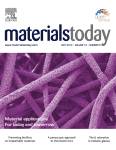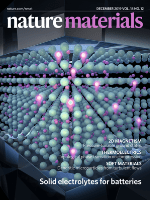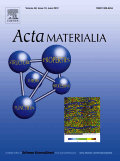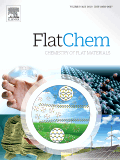
Advanced Fiber Materials
Scope & Guideline
Exploring Innovative Horizons in Material Research
Introduction
Aims and Scopes
- Multifunctional Fiber Development:
The journal emphasizes the creation of fibers that serve multiple purposes, integrating functionalities such as sensing, energy harvesting, and therapeutic applications through innovative material engineering. - Wearable and Smart Textiles:
A significant focus is placed on the development of textile materials that are wearable, allowing for applications in health monitoring, personal safety, and interactive technologies. - Sustainable Materials and Processes:
Research on environmentally friendly fiber production methods and the use of sustainable materials is prioritized, reflecting a commitment to reducing ecological impact in material science. - Advanced Fabrication Techniques:
The journal covers cutting-edge fabrication methods like electrospinning, wet spinning, and 3D printing to create high-performance fibers with tailored properties. - Biomedical Applications:
A core area includes the application of fiber materials in biomedical fields, such as drug delivery, wound healing, and tissue engineering, showcasing the intersection of material science and healthcare. - Energy Storage and Conversion Technologies:
Research on fiber-based materials for energy applications, including batteries and supercapacitors, is a key aim, highlighting the role of fibers in enhancing energy efficiency. - Nanotechnology in Fibers:
The integration of nanotechnology into fiber materials for enhanced performance, such as improved mechanical properties and novel functionalities, is a prominent theme.
Trending and Emerging
- Wearable Health Monitoring Systems:
Recent papers highlight the development of fibers that integrate health monitoring technologies, such as sensors for physiological signals, showcasing a trend toward personalized healthcare solutions. - Smart Textiles with Adaptive Features:
There is a growing focus on textiles that can adapt to environmental changes, such as temperature regulation and moisture management, indicating an increasing interest in responsive and interactive textiles. - Electrospun Nanofibers for Advanced Applications:
Electrospinning continues to be a dominant technique, with emerging applications in areas such as energy storage, environmental remediation, and medical devices, reflecting its versatility and effectiveness. - Integration of Artificial Intelligence in Fiber Technologies:
The incorporation of AI and machine learning in the design and application of fiber materials is becoming more common, indicating a trend towards smart manufacturing and predictive modeling. - Sustainable and Biodegradable Fibers:
There is a significant increase in research focused on developing fibers from renewable sources and biodegradable materials, aligning with global sustainability goals. - Nanomaterials in Fiber Engineering:
The use of nanomaterials to enhance fiber properties, such as strength, conductivity, and antibacterial effects, is on the rise, showcasing advancements in material science. - Energy Harvesting Fibers:
Emerging research on fibers capable of energy harvesting, including piezoelectric and triboelectric materials, highlights the growing intersection of energy technology and fiber science.
Declining or Waning
- Traditional Fiber Reinforcement Techniques:
Research centered on conventional fiber reinforcement methods has become less prevalent as newer, more advanced techniques and materials gain traction in the field. - Low-Tech Applications:
The journal has shifted away from low-tech applications of fiber materials, focusing instead on high-tech, multifunctional uses that align with current technological advancements and market demands. - Basic Fiber Characterization Studies:
There is a noticeable decrease in publications solely focused on basic characterization of fiber properties, as the journal increasingly prioritizes studies with innovative applications and implications. - Single-Function Fibers:
Research on fibers designed for singular functions is waning as the demand for multifunctional materials rises, reflecting a broader trend toward integrated solutions in fiber technology.
Similar Journals

Materials Today
Advancing the Frontiers of Materials ScienceMaterials Today is a premier academic journal published by Elsevier Science Ltd, specializing in the dynamic fields of materials science, mechanical engineering, and condensed matter physics. Established in 1999, the journal has garnered an enviable reputation, consistently ranking in the Q1 category across multiple disciplines including mechanics of materials and general materials science, reflecting its influence and high-quality research output. With an impressive Scopus ranking—4th in both mechanical engineering and mechanics of materials, and 6th in condensed matter physics—Materials Today serves as an essential resource for researchers, professionals, and students seeking to stay at the forefront of developments in material innovations and applications. The journal is known for its commitment to publishing significant research findings and reviews, making it a vital platform for disseminating knowledge and fostering collaboration in the rapidly evolving materials field. Although it does not offer open access, its robust impact factor underscores the importance of the content published, ensuring wide visibility and citation among the academic community. Explore the rich tapestry of materials research with Materials Today, where groundbreaking insights pave the way for future technological advancements.

NATURE MATERIALS
Unveiling the Potential of Next-Generation Materials.NATURE MATERIALS is a premier academic journal published by NATURE PORTFOLIO, focused on the multidisciplinary field of materials science. As of 2023, it proudly holds a distinguished impact factor and ranks in the Q1 category across multiple domains including Chemistry, Condensed Matter Physics, and Mechanical Engineering, reflecting its critical role in advancing research and innovation in these fields. With a strong emphasis on high-quality, cutting-edge research, NATURE MATERIALS serves as a vital platform for researchers and professionals dedicated to the exploration and development of new materials and their applications. Its robust rankings in Scopus further underscore its influence, with top percentile standings in key areas such as Mechanical Engineering and General Materials Science. Although not an open-access journal, NATURE MATERIALS maintains a rigorous selection process to ensure that the most significant and impactful studies reach a global audience, thereby promoting the dissemination of knowledge and collaboration across disciplines.

Accounts of Materials Research
Transforming research into impactful materials advancements.Accounts of Materials Research is a premier journal published by the American Chemical Society, focusing on the multidimensional field of materials science. With a robust impact factor and a commitment to open-access research, it serves as a vital platform for leading-edge discoveries from 2020 to 2024. The journal has rapidly ascended to the top quartile in multiple categories, including Chemical Engineering, Materials Chemistry, and Polymers and Plastics, demonstrating its significant influence within the academic community. Recognized by Scopus as a key resource—with remarkable rankings that place it in the 95th percentile of its field—Accounts of Materials Research is devoted to publishing high-quality, innovative research that addresses critical challenges in materials development and implementation. This journal is essential for researchers, professionals, and students seeking to stay informed about the latest advancements and collaborative opportunities within the interdisciplinary landscape of materials science.

GIANT
Exploring Tomorrow's Materials Today.GIANT is a pioneering open-access journal published by Elsevier that has rapidly established itself as a cornerstone in the fields of Chemistry, Materials Chemistry, Polymers and Plastics, and Surfaces, Coatings and Films. Since its inception in 2020, GIANT has been committed to disseminating cutting-edge research and facilitating scholarly communication in these dynamic areas. With a remarkable Q1 ranking across multiple categories, the journal reflects an impressive impact factor within the academic community, evidenced by its standing in the top 82nd percentile in several Scopus classifications. Based in the Netherlands at Radarweg 29, Amsterdam, GIANT embraces a global audience through its open-access model, ensuring that groundbreaking discoveries are accessible to researchers, professionals, and students alike. Fostering innovation, the journal strives to shape the future of materials science and chemistry, making significant contributions in an era characterized by rapid scientific advancement.

INTERNATIONAL MATERIALS REVIEWS
Unveiling Innovations in Metals and AlloysINTERNATIONAL MATERIALS REVIEWS, published by SAGE Publications Inc, is a leading journal dedicated to the comprehensive analysis of contemporary research in the fields of materials chemistry, mechanical engineering, mechanics of materials, and the study of metals and alloys. With an impressive impact factor and a Q1 ranking across multiple categories such as Materials Chemistry and Mechanical Engineering in 2023, it ranks amongst the top journals for innovative materials research. The journal has a long-standing history since its inception in 1987 and continues to serve as a crucial resource for academics and professionals alike. Although it is not open access, it is renowned for its rigorous peer-review process and its commitment to disseminating high-quality materials science research globally. Researchers, students, and industry professionals benefit greatly from the journal's insightful reviews, both for the advancement of theoretical knowledge and practical applications within the fast-evolving materials field.

ACTA MATERIALIA
Unveiling Innovations in Material EngineeringACTA MATERIALIA is a premier journal in the field of materials science, published by PERGAMON-ELSEVIER SCIENCE LTD. With an ISSN of 1359-6454 and an E-ISSN of 1873-2453, this esteemed journal serves as a vital platform for disseminating high-quality research across various critical domains, including ceramics and composites, electronic, optical and magnetic materials, metals and alloys, and polymers and plastics. Recognized for its impact in the field, ACTA MATERIALIA boasts a remarkable standing, featuring a Q1 ranking in multiple categories as of 2023, solidifying its importance among the top journals in materials science. Researchers and professionals benefit from open access options, ensuring that groundbreaking findings are available to a global audience. Operating out of the United Kingdom, ACTA MATERIALIA strives to advance knowledge and innovation within the materials science community, making it an invaluable resource for academics, industrial professionals, and students dedicated to the future of material engineering and technology.

FlatChem
Fostering Global Collaboration in Materials InnovationFlatChem, an esteemed journal published by ELSEVIER, serves as a premier platform for disseminating high-quality research in the dynamic fields of ceramic and composite materials, electronic and optical materials, materials chemistry, and surfaces, coatings, and films. Since its inception in 2017, the journal has garnered a robust reputation, evidenced by its rank in the top quartile (Q1) across multiple categories, including a commendable rank of #25/127 in Ceramics and Composites and #49/284 in Electronic, Optical and Magnetic Materials. With a focus on pioneering advancements and innovative methodologies, FlatChem not only highlights cutting-edge research but also promotes collaboration and knowledge exchange within the scientific community. The journal’s impact is underscored by its impressive rankings in Scopus, marking it as a vital resource for researchers, professionals, and students aiming to stay at the forefront of materials science. As an open-access journal, it ensures that groundbreaking findings are readily accessible, fostering a broader understanding and application of materials innovation worldwide. The journal is based in the Netherlands, with its headquarters located at RADARWEG 29, 1043 NX AMSTERDAM, NETHERLANDS. Join the vibrant community contributing to FlatChem and engage with the forefront of material advancements.

Fibers
Transforming Research into Real-world ApplicationsFibers is a leading peer-reviewed open access journal published by MDPI, focusing on cutting-edge research within the realm of materials science, particularly in the domains of biomaterials, ceramics and composites, and structural engineering. Established in 2013, the journal has gained recognition for its significant contributions to the field, boasting an impact factor that positions it in the Q2 quartile across multiple categories such as Biomaterials, Ceramics and Composites, Civil and Structural Engineering, and Mechanics of Materials as of 2023. With a Scopus ranking that highlights its prominence—such as in the top 20% in Civil and Structural Engineering—the journal fosters an inclusive platform for academic dialogue and technical advancement. Researchers and professionals can access the journal’s comprehensive articles freely, promoting the dissemination of knowledge that is crucial for the advancement of innovative materials and their applications. Situated in Basel, Switzerland, Fibers continues to be an essential resource for those looking to stay at the forefront of research and technology in material sciences.

Polymer-Plastics Technology and Materials
Connecting Researchers in the World of Plastics TechnologyPolymer-Plastics Technology and Materials is a premier academic journal published by Taylor & Francis Inc., dedicated to the dynamic fields of chemical engineering, materials chemistry, and polymers and plastics. With an impact factor that reinforces its reputation, this journal is strategically indexed in Scopus, ranked notably within its categories (Q2), showcasing its influence and relevance in the academic community. Since its inception in 2019, the journal has served as an essential platform for researchers, professionals, and students to disseminate innovative studies and advancements in polymer science and materials technology. As an Open Access publication, it ensures that cutting-edge research is accessible to a global audience, fostering collaboration and knowledge sharing in the material sciences. Located in the United Kingdom, Polymer-Plastics Technology and Materials continues to enhance the dialogue within the industry, addressing critical challenges and exploring emerging trends that shape the future of polymer and plastics technologies.

Advanced Composites and Hybrid Materials
Exploring the Boundaries of Composite TechnologiesAdvanced Composites and Hybrid Materials, published by SPRINGER NATURE, is a premier journal dedicated to the field of materials science, with a keen focus on innovative composite materials and their applications. With its ISSN 2522-0128 and E-ISSN 2522-0136, the journal has established itself as a cornerstone for researchers and professionals in materials chemistry, ceramics, and polymers, achieving an impressive Q1 ranking across multiple categories in 2023. In particular, it ranks #3 out of 161 in Polymers and Plastics and #4 out of 127 in Ceramics and Composites, highlighting its influential presence within the academic community. The journal aims to provide a cutting-edge platform for the dissemination of groundbreaking research and developments from 2018 to 2024, facilitating knowledge sharing and collaboration among experts. While currently adopting a traditional access model, the significance and impact of research published in this journal cannot be overstated, making it an essential resource for anyone interested in advancing the field of composite materials.